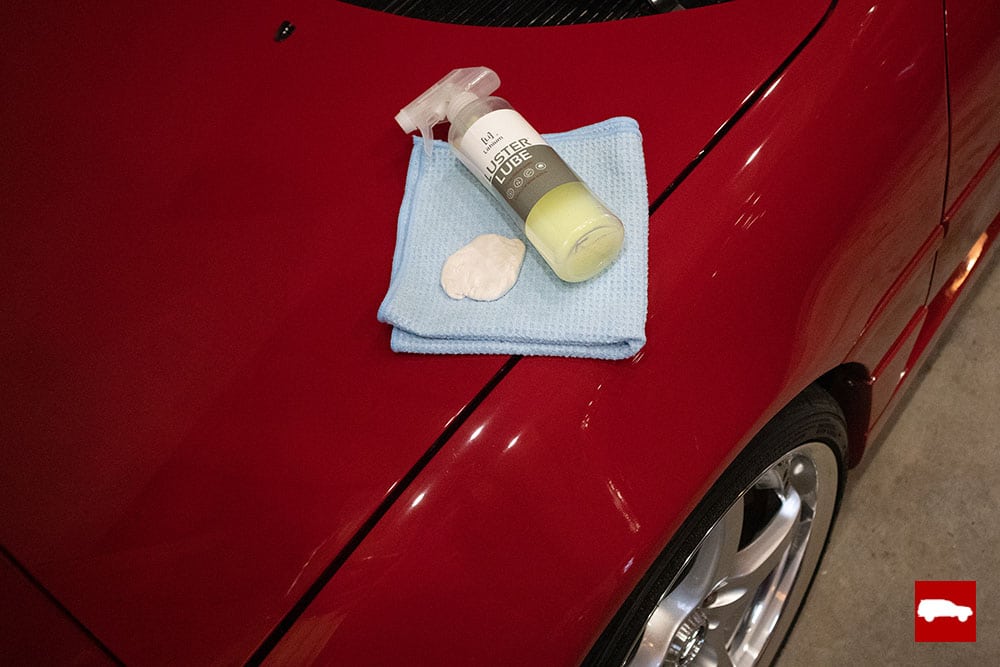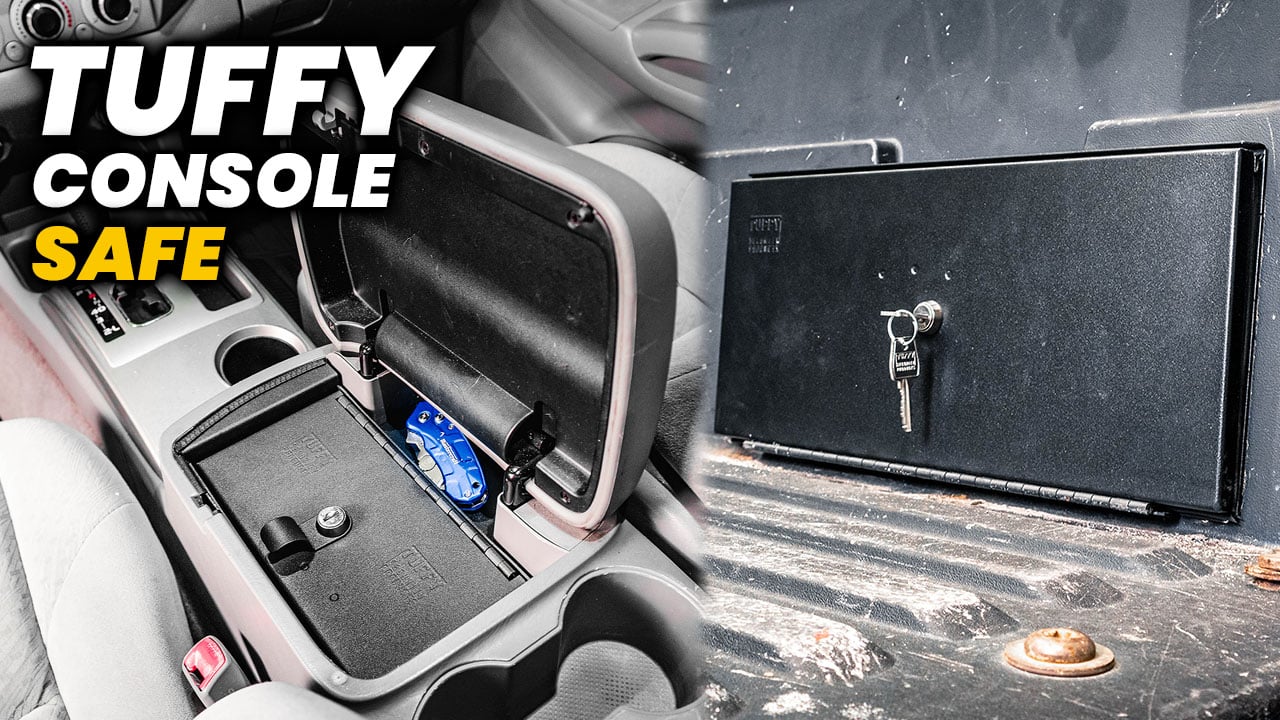Picture this: it’s Saturday afternoon and you’re hanging out with your pride and joy in the garage. You’re halfway done clay barring the car and surprise! You’re out of clay lube.
Do you need to drop what you’re doing and rush to the store, or can that trip be avoided? I have good news – there are other detailing products you can use with your clay bar and they’re likely already sitting on your shelf.
Here are some alternatives that many detailers use to substitute clay lubricant:
- Detailing spray
- Spray wax
- Rinseless wash (like Optimum No Rinse)
- Soapy water
- Regular water (only for some types of clay)
Read on to find out which ones I recommend and which ones you might want to skip.
The Sole Purpose of Clay Lube
A clay bar is simply going to stick to your paint if a liquid isn’t applied to let it float across the surface. Will just about anything work though? A proper clay lube will allow it to glide across the paint and prevent loose contaminants from scratching the surface (you should always start with a freshly washed vehicle of course).
The most logical choice when browsing through the detailing supplies would be a specific clay lubricant, although there are other options you may already own that will get the job done.
Be aware that some lubricants won’t play well with some types of clay and may even break down the clay. I would recommend reading the manufacturer’s recommendations before getting too adventurous.
A clay bar is an effective product for removing surface contaminants from the paint, but honestly so is 80 grit sandpaper. The key difference here is that when lubricated properly, one can get the job done without marring the surface. Now let’s take a look at what you might already have in your garage that could do the trick.
Using Detailing Spray as a Clay Lubricant
My first introduction to using a clay bar came via the Meguiar’s Smooth Surface Clay Kit. This comes with some clay, a microfiber towel, and a bottle of their Quik Detailer. For many years this is all I knew to use, and it works well!
Don’t think that just because this is included in “beginner kits” there is anything wrong with using a detailing spray. There isn’t a need to ever graduate to a dedicated clay lube.

The lube I tried recently makes the clay stick to my fingers which is rather annoying. I’m not sure if it’s worth trying a different lube or staying with the quick detailer. In terms of performance, I haven’t been able to discern a difference between the two.
I usually have at least a couple bottles of detailing spray around since I use it regularly. Like many of you, I enjoy experimenting with different products and not all of them work the way I hope they will.
Occasionally I end up with a detailing spray that leaves my car a smeary mess and I’ll just set that aside to use when claying. The clay bar doesn’t come out as often and of course I never plan far enough ahead to check and see if I have clay lube handy but the trusty detailing spray is always ready.
Detailing spray does leave a coating on your paint though and may not be the best choice if you’re planning to polish immediately afterward. This coating would then need to be removed or polished away before you can dive into actually correcting the paint. In most cases, a wipe-down with isopropyl alcohol is all that’s needed.
Don’t waste your good spray on claying the car- the cheapest stuff you can find at the parts store will work just fine. I find myself coming back to the Meguiar’s Quik Detailer often.

Will Spray Wax Work as a Clay Lube?
Although this sits right next to the detailing spray on the shelf at the store and can be easily confused, skip the spray wax when using a clay bar. The wax tends to break down the clay and will leave residue behind, possibly creating another step to remove it. When using a detailing spray or clay lube, it’s a simple wipe with the microfiber to dry the surface.
A spray wax has its uses in the garage, but lubricating a clay bar is not one of them. Spray wax also tends to cost a bit more than the other options we’re listing here. If you’re in a pinch, it’ll be slick enough to get the job done – but it’s not the best choice overall.

Optimum No-Rinse Clay Lube Dilution Ratio
While I don’t think Optimum No-Rinse is necessarily on the garage shelf of every detailing hobbyist, it does make an excellent clay lube should you have it. For those not familiar with it, ONR is a really neat product that is perfect for mid-winter washes or if you find yourself subject to a water use restriction.
It only takes about 2 oz of ONR per gallon of water when using it as a clay lubricant and it won’t leave behind any odd residue that would need to be cleaned up with another step.
This makes Optimum No-Rinse an extremely versatile product. Not only can you use it for its original use as a no-rinse car wash and clay lubricant, but also for washing with water or even as a quick detailer. You’ll want a bit stronger mix of 8 oz to 1 gallon if you plan to use it as a quick detailer. It’ll make your life easier if you have spray bottles labeled for each use.
Soapy Water Can be Used as a Clay Lubricant
Your car wash soap acts as a lubricant when washing a vehicle and you’ve probably noticed how slippery it feels between your fingers. Mix it up in a spray bottle with the same dilution ratio you would use for washing or perhaps a little heavier and you have a substitute clay lube if you’ve exhausted all of your other options.
This is a budget-friendly option and since it’s cheaper, you won’t find yourself being as stingy with it as you might with a $20 bottle of detailing spray. There’s basically no such thing as too much lube when it comes to using a clay bar.
Take note that dish soap is not a valid substitute here! Car wash soap means car wash soap! Use a pH-neutral shampoo that will be gentler on the paint. It’s best to avoid products that are a “wash and wax” combo as the wax component can clog up or degrade the clay bar as noted above in the spray wax section.
Can You Use Water by Itself With a Clay Bar?
Water is a very poor lubricant on its own and should not be used with a standard clay bar. There are some clay bars out there that have been impregnated with a lubricant though which does make it possible to use water alone with them – but they aren’t super common.
Looking through the dozens of options on my favorite detailing supplies website, all recommend using some sort of lubricant. The same companies selling clay bars all offer lubricants or quick detailers and logically recommend using their products.
Water may keep it from sticking to the surface, but it will not decrease the friction which could allow for serious amounts of swirls in your paint. You would never wash your car without soap which is the same reason it is needed when running a clay bar over it.
Using a clay bar improperly can easily trash your paint job. Minimize the risk of turning the whole car into a giant spiderweb by using proper lubrication.
Conclusion
Using a clay bar on your vehicle a couple of times per year is a fantastic way to keep your paint smooth and clean. Don’t fret if you forget to order more clay lubricant in those long periods between though, as you likely have several viable substitutes in your healthy collection of detailing products.
Consider experimenting with these alternatives and maybe you’ll find one that saves you some money or an extra trip to the store!

Tim is the creator of Canadian Gearhead. His experience with auto detailing and working for Toyota shows through all of the articles posted here. He runs the Canadian Gearhead site and YouTube channel full-time now and currently owns a 2007 4runner, 2006 Tacoma, and 1991 MR2. Read more about Tim:





Leave a Reply